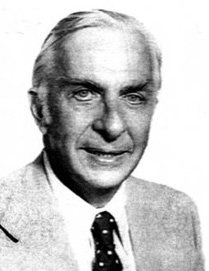Kurt Richard Stehling
From The Space Library
Contents |
Early Life
Kurt Stehling was raised in Giesen Germany where he was witness to many of the early Zeppelin flights of the 1920s. In late 1929 his family emigrated to Canada. Stehling would attend Toronto Central Technical High School and in 1934 he would build a methane and oxygen rocket in the school biology laboratory. He created his own Rocket and Space Study Club.
World War II
When war broke out in 1939 Stehling returned to Europe in uniform, to fight as part of the Canadian Armoured Corps. He witnessed the onslaught of the V2 rockets as they fell on London and he was later injured in Holland.
Canadian Rocket Society
After the war Kurt Stehling returned to Toronto where he became president and founder of The University of Toronto Rocket Society. In January 1948 Stehling publicly debated senior members of the Canadian astronomy community about the promise of space flight and suggested that with its wide open spaces Canada should become a leader in long-range rocket experiments. In June 1948 in front of a gathering of 100 attendees at the Royal Ontario Museum Stehling outlined the aims of the society. Stehling stated, "We are interested in the peacetime use of rockets, not their development for war. We hope to interest the public not only in the mechanical side of rockets but in their social and economic significance."
Move to United States
Stehling married a girl from Buffalo New York in 1944, in April 1948 he gained resident status in the USA and in May 1950 he left for Buffalo and a position with Bell aircraft's rocket division. In 1951 Stehling wrote to James van Allen and encouraged him to pursue the use of balloons to launch a rocket into space.
Radar satellites
In 1953, while on short leave from Bell Aircraft, at the James Forrestal Research Center in Princeton New Jersey, Stehling published a paper in which he described the advantages of using space-borne radar to "paint the surface of the Earth" and transmit the data back to the ground for study. Stehling delivered his paper, entitled Earth Scanning Techniques for Orbital Rocket Vehicles, on January 26th 1953 at a technical session of the American Rocket Society in New York. He compared both optical and microwave systems, concluding that the optical systems at that time had the weight and resolving power advantage, but the microwave radar system didn't rely on daylight or good weather. He went on to write a white paper on a project which would later become known as Seasat. This project proposed the use of radar altimetry for monitoring ocean currents and resources. This was a subject already of keen interest to Canada. Mapping the high arctic in detail was of considerable importance to the government and to resource industries. By 1966 Stehling was working with US Vice President Humphrey, in an organization which was the precursor to NOAA, where he wrote more papers pushing the concept of a radar satellite to study the ocean and sea ice.
Reaction Control systems
Stehling co-authored a patent at Bell, with rocket backpack pioneer Wendell Moore, for the reaction control system which later appeared on the X-15 and would ultimately evolve into the system on the Space Shuttle.
Project Vanguard
In 1956 Stehling became propulsion engineer on the American artificial satellite program which later became known as Project Vanguard.
NASA
Stehling was on the Rocket and Satellite Research Panel (along with Wernher von Braun , Krafft Ehricke, James van Allen, Ernst Stuhlinger, Fred Whipple and others) which urged U.S. President Eisenhower in 1957 to form NASA.

